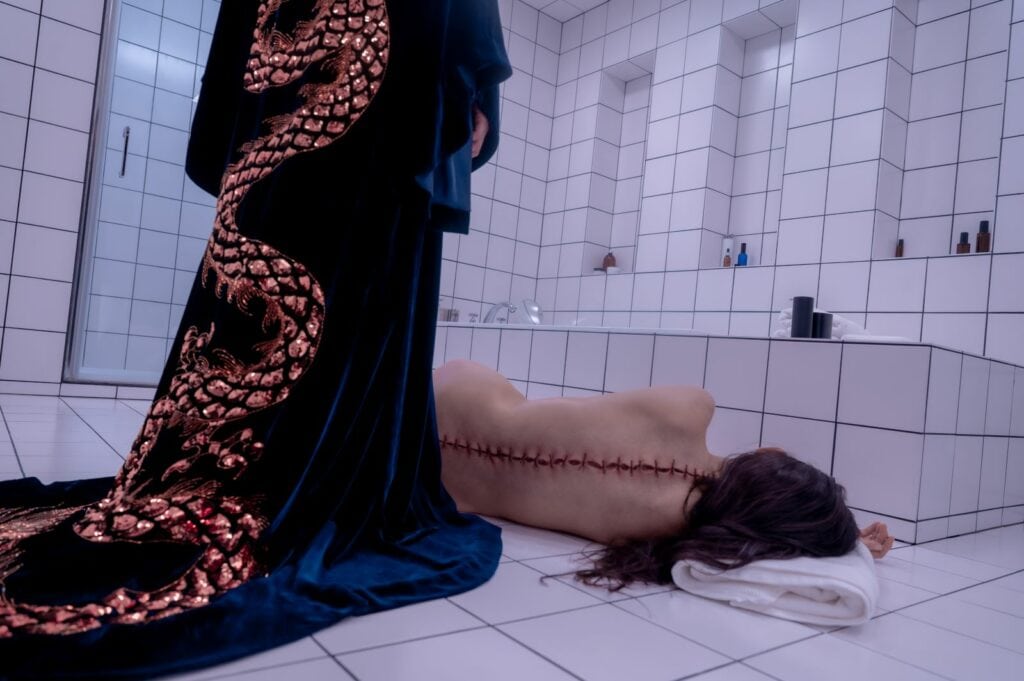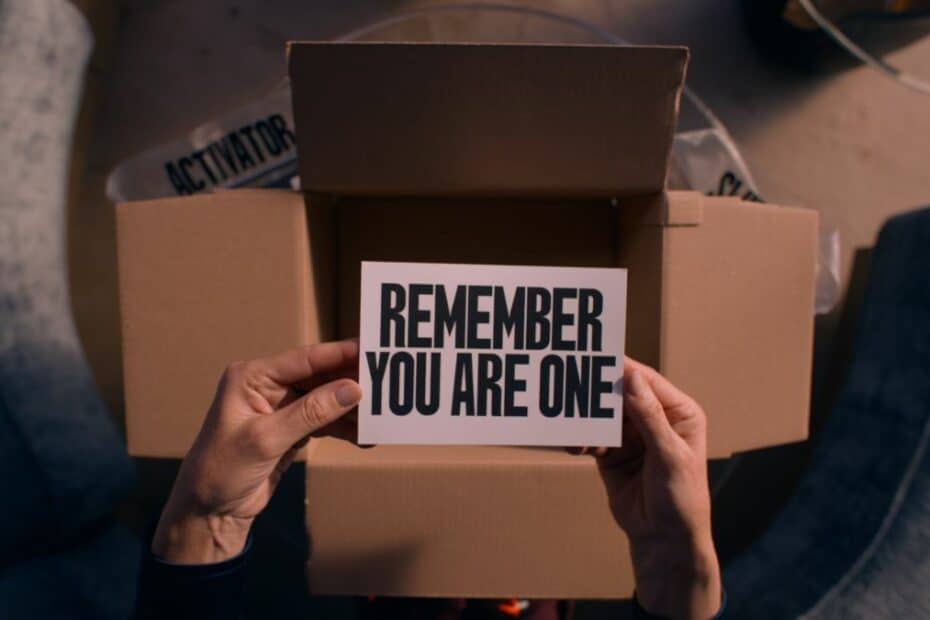I was recently told that the producers of The Substance submitted the film to the Cannes Film Festival, expecting a slot in the Midnight Screenings section. According to this testimony, they were shocked when the film was offered a competition slot. While I can’t vouch for the validity of this story, it’s unquestionable that it has more substance than Carolie Fargeat’s sophomore effort. It also fits well with my own reaction on X after watching the director’s first film, Revenge (2017). This is a film that doesn’t belong in competition at any serious festival.
The storyline in The Substance is not that complex. Demi Moore plays Elisabeth Sparkle (I kid you not), an actress who we encounter relatively late in her long career when she is making fitness videos that look strangely retro. On her fiftieth birthday, she happens to overhear a call her slimy producer Harvey (Dennis Quaid, in a part originally written for Ray Liotta) makes, where he says that he intends to replace her with someone younger and more beautiful. The same day, she is involved in a car accident with few visible injuries. At the hospital, a shady character approaches her and tells her about what changed his life. It turns out to be the titular serum.
Fifty Shades of Dorian Gray
When injecting the serum, a younger, more beautiful version of yourself will emerge from your body. However, only one of the two versions can be conscious simultaneously and only for seven consecutive days. Elisabeth injects herself, and soon, a younger girl, Sue (Margaret Qualley), presents herself and immediately takes action. She quickly gets Elisabeth’s former job and enjoys it immensely. Will she comply with the seven-day rule, you ask? The answer will not make you younger but rather give you gray hair from frustration or boredom. A sensitive reader who is apt at reading between the lines might have detected a slight scepticism on my part towards the film.

Slow cinema for a slow audience
The film runs 140 minutes, which is way too long. A characteristic redundancy example can be found in the very first sequence. Fargeat chooses to open the film with Elisabeth Sparkle’s star on the Hollywood Walk of Fame. We will follow the star from being constructed and through time-lapse photography during the years when it gets increasingly worn and disrespected. A point that could have been made in seconds drags on what seems to be forever. The scene is emblematic of the whole film, where things are repeated and drawn out for no reason. The film could have used substantial trimming, verging on hedge-cutting. Where are script doctors and editors when you need them the most?
Youth Becomes Her
Ironically, there are three of the latter, including the director herself, but like so many other works nowadays, restraint doesn’t seem to be an option. To make matters worse, the film doesn’t have a shred of originality. It wouldn’t be unfair to claim that it is basically an uninspired remake of Death Becomes Her (1992) sprinkled with a fair amount of Carrie (1976). It’s typical that the director only references mainstream horror films while talking about The Substance. I occasionally thought of Larry Cohen’s The Stuff (1985), even though I hesitate to mention such an intelligent film with a modest budget in the same sentence as this bloated work.
The Substance is as subtle as the ludicrous “The impossibility of being a woman” speech in Barbie. Maybe it wasn’t altogether surprising that the jury, headed by Greta Gerwig, decided to give the film a prize, even though the award for Best Script was an odd choice, not least for such a derivative work. Apart from the films mentioned above, Fargeat joins far too many directors who believe that referencing Stanley Kubrick will give her own movie a higher stature. Directors should understand by now that a reference to a superior director doesn’t turn gravel into Emerald, Ruby, or Red Diamond, no matter how much red you pour over the screen.
The password is Blood
From a cinematic point of view, there is not much to talk about. The colour scheme is garish and obvious. The latter is the operative word for everything in this tiresome work. Elisabeth lives in an antiseptic apartment with a window akin to a movie screen. The TV office’s walls are blood-red, and just like in Revenge, where the prop team often ran out of fake blood, everything will be soaked in the red substance towards the end (yes, finally, the boredom ended). Shortly before that moment (drawn out, of course), we will be subjected to a cinematic reference that might be one of the least earned that I’ve ever witnessed.

The performances are as subtle as a punch in the face. Since I already mentioned Kubrick, it’s interesting to note that while Fargeat constantly refers to The Shining, her style actually more resembles the lesser and uglier A Clockwork Orange (1971) in the use of close-ups and cartoonish acting. Quaid’s performance is especially egregious. It would have been interesting to see what Ray Liotta could have done with the part since he has a more natural, sinister aura that wouldn’t have to be constantly underlined. The Substance is an obvious candidate for this year’s Disapproval list.
The Substance abuse
Going back to the aforementioned retro aspect, I was initially confused about when the film was supposed to take place with the Jane Fondaesque fitness videos. However, this is not the sole aspect of the film that feels dated. That goes even more for the formulaic depiction of women in the Western world as victims or useless after a certain age. That kind of thinking feels antiquated today. I am not bringing this up polemically, but rather to point out that this kind of thinking could lead to a negative confirmation bias, and embracing it as a fact of life would be highly restricting. One could find countless examples of the opposite attitude, even in the entertainment or fashion industries.
The Substance has been labelled Body horror, and there have been comparisons to the sophomore film that won the Palme d’Or in 2021. Some voices claimed that Fargeat’s film would have a serious chance at the top prize, as well. There is a specific phenomenon with horror films or other violent works at prominent film festivals, where they are screened for people who are far from specialists in genre films, which might cause peculiar reactions. One such example was how many spectators were appalled by the violence in the relatively mild Holy Spider at Cannes two years ago. I find it hard to believe that bonafide horror fans would do much more than shrug their shoulders while watching The Substance.
The Substance by Coralie Fargeat - Weak

Director: Coralie Fargeat
Date Created: 2025-04-22 00:54
1
Pros
- Demi Moore's comeback
Cons
- Everything else
